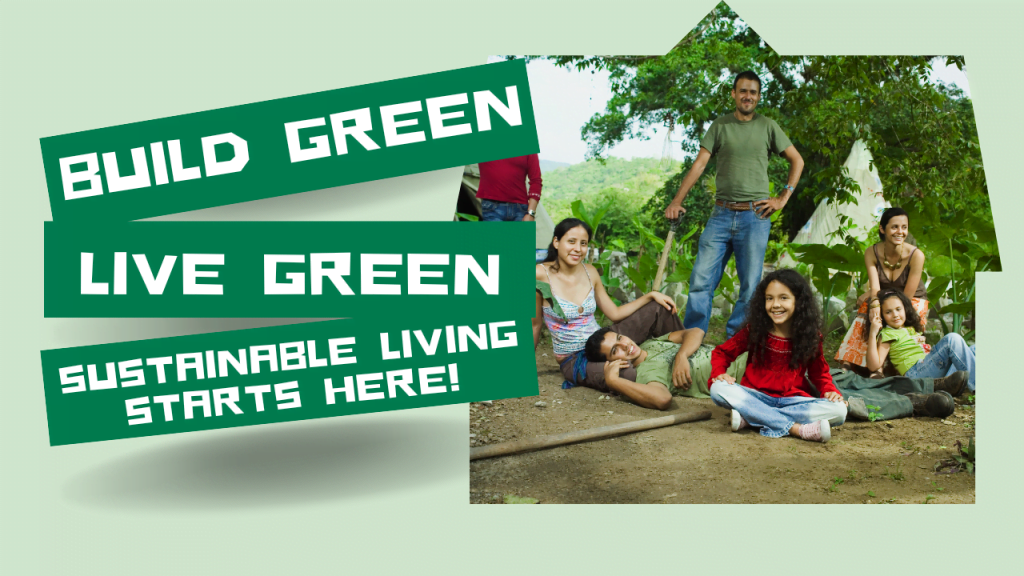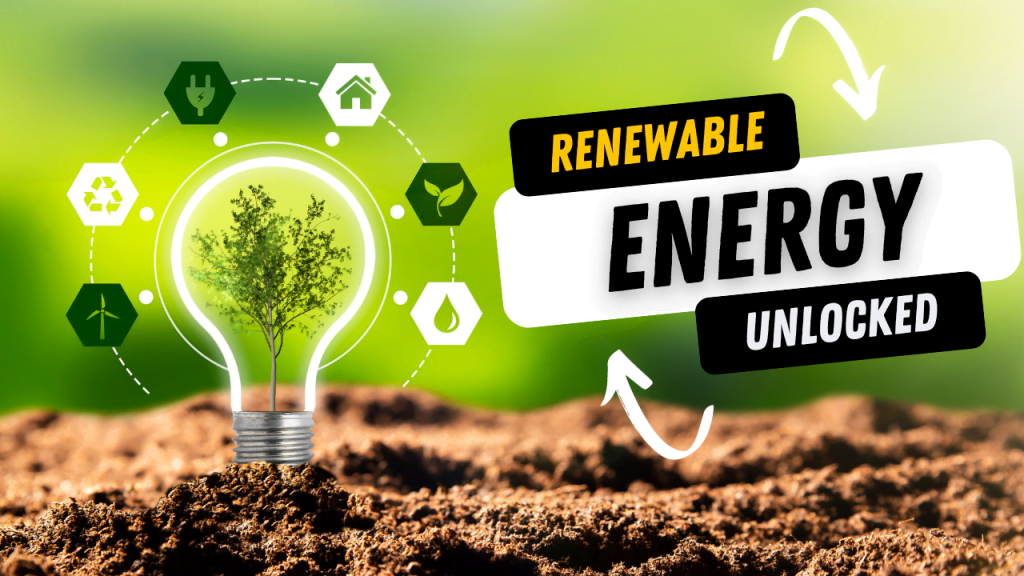Are you dreaming of a cosy, sustainable off-grid home? If so, you’re not alone! More and more people are seeking eco-friendly, self-sufficient living spaces. Today, we’re going to explore green building materials and how to incorporate them into your off-grid construction. So, let’s dive right in and learn how to create a home that’s not only beautiful but also kind to our planet!

Definition of Green Building Materials
First things first, let’s clarify what green building materials are. These eco-friendly options are made from renewable resources, recycled materials, or have a low environmental impact. They not only reduce waste and energy consumption but also contribute to a healthier living environment. Green building materials come in various forms, so let’s explore some of the top options and how to use them in your off-grid home.
Rammed Earth
Rammed earth is an ancient building technique that uses compressed soil to create solid, sturdy walls. This material is not only low-cost and abundant, but it also boasts excellent insulation properties. To build with rammed earth, simply combine locally sourced soil with a small amount of cement or lime, then compact it within reusable formwork. Voila! You’ve got yourself a strong, energy-efficient wall.
Straw Bale
Another eco-friendly option is straw bale construction. Straw bales provide fantastic insulation, keeping your home warm in winter and cool in summer. To build with straw bales, stack them like bricks, then cover them with plaster or stucco. This technique is both affordable and sustainable, making it a perfect choice for off-grid living.
Bamboo
Bamboo is a rapidly renewable resource that makes for a versatile building material. It’s strong, lightweight, and easy to work with. You can use bamboo for framing, flooring, and even as a decorative element in your off-grid home. Be sure to source your bamboo from a responsible supplier to ensure it’s sustainably harvested.
Recycled Steel
For a more industrial look, consider using recycled steel in your off-grid construction. Steel is durable, recyclable, and can be used for framing, roofing, and even interior design elements. Opting for recycled steel over new steel helps reduce your environmental impact and supports a circular economy.
Hempcrete
Last but not least, hempcrete is a fantastic green building material made from hemp fibres, water, and lime. It’s lightweight, breathable, and boasts impressive insulation properties. To use hempcrete in your off-grid home, mix the ingredients together, then pack the mixture into formwork. Once it dries, you’ll have a sturdy, energy-efficient wall.
By incorporating these green building materials into your off-grid home, you’re taking a step towards a more sustainable, eco-friendly lifestyle. So go ahead, get creative, and build the off-grid home of your dreams!
Maximising Efficiency and Comfort in Off-Grid Homes with Green Building Materials
Now that you’re familiar with some top green building materials, let’s explore how to maximise efficiency and comfort in your off-grid home. With the right materials and techniques, you can create a cosy, eco-friendly living space that meets your needs.
Insulation
Proper insulation is key to maintaining a comfortable temperature in your off-grid home. Green insulation materials, such as sheep’s wool, cellulose, and cork, are not only eco-friendly but also highly effective. Incorporate these materials into your walls, floors, and ceilings to keep your home warm in winter and cool in summer.
Windows and Doors
Energy-efficient windows and doors play a crucial role in keeping your off-grid home comfortable. Look for double or triple-glazed windows and sustainable window frames made from materials like reclaimed wood or recycled aluminium. Don’t forget to source reclaimed doors and windows to further reduce your environmental impact.
Roofing
Eco-friendly roofing materials can help you save energy and reduce your carbon footprint. Consider living roofs, also known as green roofs, which are covered with vegetation to improve insulation and absorb rainwater. Solar roof tiles are another excellent option, as they generate clean energy while serving as a durable roofing material. Finally, recycled metal roofing is a sustainable, long-lasting choice that requires minimal maintenance.
Flooring
Green flooring materials are not only stylish but also contribute to a healthier indoor environment. Cork, reclaimed wood, and natural linoleum are all eco-friendly options that add warmth and character to your off-grid home. These materials are durable, renewable, and can be sourced sustainably, making them ideal choices for your eco-conscious lifestyle.
Paints and Finishes
Conventional paints and finishes can release harmful chemicals called volatile organic compounds (VOCs) into the air, affecting indoor air quality. To maintain a healthy living environment, opt for low-VOC paints and natural oil finishes. Lime or clay-based plasters are also great alternatives, as they’re breathable and help regulate humidity levels.
By using green building materials and focusing on energy efficiency, you’ll create a comfortable, eco-friendly off-grid home that aligns with your sustainable values. Embrace these innovative materials and techniques, and you’ll be well on your way to building the off-grid home of your dreams!
Green Building Certifications and Programs
As you create your eco-friendly off-grid home, consider pursuing green building certifications and participating in programs that recognise and promote sustainability. These certifications can add credibility to your efforts and ensure your home meets the highest environmental standards.
LEED Certification
Leadership in Energy and Environmental Design (LEED) is a globally recognised green building certification program. LEED-certified homes are designed to be energy-efficient, water-saving, and environmentally friendly. By pursuing LEED certification, you’ll demonstrate your commitment to sustainability and inspire others to follow suit.
To obtain LEED certification, you’ll need to meet specific criteria across several categories, such as sustainable sites, water efficiency, energy and atmosphere, materials and resources, and indoor environmental quality. As you plan your off-grid home, incorporate green building materials and design strategies that align with LEED requirements, and you’ll be well on your way to certification.
Living Building Challenge
The Living Building Challenge (LBC) is another rigorous green building certification program that focuses on creating regenerative, self-sufficient spaces. LBC-certified buildings not only minimise their environmental impact but also contribute positively to their surroundings. This certification is perfect for off-grid homeowners who want to push the boundaries of sustainable living.
The LBC consists of seven performance areas, or “Petals,” including place, water, energy, health and happiness, materials, equity, and beauty. Each Petal contains specific imperatives that your off-grid home must meet to achieve certification. As you design your home, incorporate green building materials and strategies that address these imperatives, and you’ll be well on your way to meeting the Living Building Challenge.
In conclusion, utilising green building materials and pursuing green building certifications are powerful ways to create a sustainable off-grid home that aligns with your eco-conscious values. Embrace these innovative materials, techniques, and programs, and you’ll not only build the off-grid home of your dreams but also inspire others to adopt a greener, more sustainable lifestyle. Happy building!
Sustainable Building Materials FAQ / TL;DR
Q: What are the benefits of using green building materials in off-grid homes?
A: Green building materials offer environmental benefits, improved indoor air quality, energy efficiency, and reduced carbon footprint.
Q: How can I ensure my off-grid home is energy efficient?
A: Choose energy-efficient windows, doors, insulation, and appliances, and incorporate renewable energy sources like solar panels or wind turbines.
Q: What are some affordable options for green building materials?
A: Reclaimed wood, straw bales, and recycled metal are cost-effective and eco-friendly options for building off-grid homes.
Q: How can I find responsibly sourced green building materials?
A: Research suppliers with sustainable practices, look for certifications like FSC for wood products, and consider local sourcing to reduce transportation impacts.
Q: Can green building materials improve indoor air quality in my off-grid home?
A: Yes, using low-VOC paints, finishes, and natural materials can help reduce harmful chemicals and improve indoor air quality.
Q: What are the steps to obtaining LEED or Living Building Challenge certification for my off-grid home?
A: Research certification requirements, incorporate green building materials and techniques, and work with a certified professional to ensure compliance.
Q: How can I incorporate renewable energy sources in my off-grid home’s design?
A: Install solar panels, wind turbines, or micro-hydro systems to generate electricity. Use energy-efficient appliances and heating/cooling systems, and consider passive solar design principles to maximise natural light and heating.




